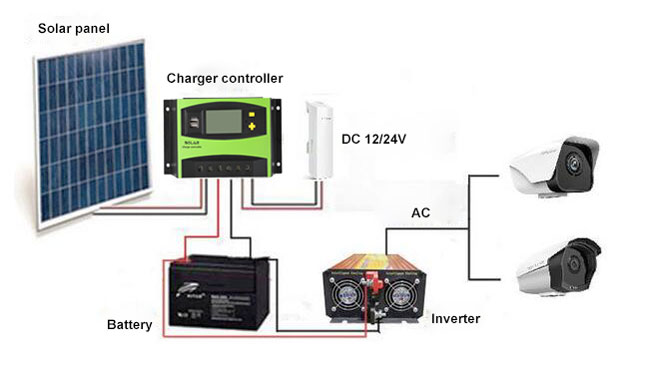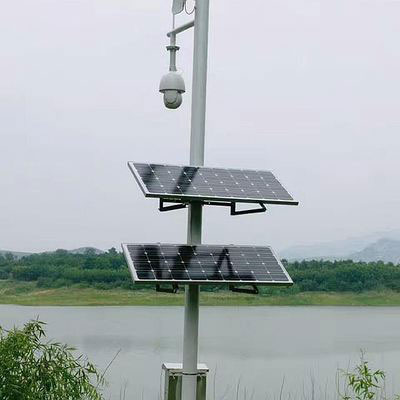In outdoor electric projects, there are usually difficulties of power acquisition or high powering construction cost. Adopting the solar power supply is a common solution, which is widely used in outdoor wireless network coverage and outdoor wireless monitoring.
The working principle of the solar energy system is to convert the solar light energy into electricity. The solar charge controller, as a central control device, storages the electrical energy converted by the solar cell into the battery pack on one hand, and manages the battery pack to supply power to the equipment on the other hand. If the load requires the AC power, the DC power needs to be inverted into AC power through the inverter. According to the power demand of the equipment, different voltages such as 12V/24V/36V/48/220V can be put out to meet the power supply requirements of various devices. The solar energy system has reliable and stable operation, thus being able to meet various harsh working environments in the outside area.
Constitution of the solar power system
The solar energy system is constituted by solar panel, solar charge controller, battery (group), and inverter.
- Solar panel: convert light energy into electricity.
- Storage battery: store electrical energy and discharge when needed.
- Charge controller: control the charging and discharging of the PV panels and batteries, the core control part of the PV power system.
- Solar inverter: convert DC power (storage battery) into AC power.
 Choosing the appropriate solar power system
Choosing the appropriate solar power system
As to the solar power supply, people will usually care about this problem: what capacity of batteries should we use if we want to guarantee that it can also supply power for 2 days when there is no sunlight? If the battery specification is 100AH, how long can the monitoring camera be working if it is powered by the battery? The selections for the battery and solar panel specifications are described below.
The three most important specifications related to power supply time of solar system are:
- Power of solar panel: the ability of power generation. The greater the power of the solar panel, the greater the amount of solar panel, the stronger the power generation capacity, and the battery can be filled in a shorter time.
- Capacity of the storage battery: the ability to store electrical energy and how much power is stored.
- Power consumption of the equipment: the sum power of the loads. The larger the load power, the greater the power consumption per unit time.
The capacity of the storage battery determines the maximum power supply time of the load. However, whether the storage battery can have the maximum power depends on the power generation capacity of the solar panel. The power of the solar panel needs to be calculated according to the battery capacity, load power, and annual average daily sunshine time of the local area.
Power supply time = capacity of the storage battery * voltage * discharge coefficient * conversion efficiency / (load power)
For instance:
The battery capacity is 100AH, and the total power of the outdoor wireless bridge and camera is about 20W, then the longest power supply time is about:
100AH * 12V * 0.8 (discharge coefficient) * 0.9 (conversion efficiency)/ 20W = 43 hours.
The total power of the outdoor wireless bridge and camera is about 20W.
If it is required to ensure a power supply of 48 hours, the battery capacity is 48H * 20W / (12V*0.8*0.9) = 111AH.
Thus, two groups of 12V 60AH batteries can be used.
Tips for the solar energy system installation
The power supply effect of solar system is closely related to the engineering construction. The following two points must be attached with attention:
- The placement angle of the solar panel: it is recommended to have a horizontal inclination of 40° to 45° in the south direction, and it is required to avoid possible obstacles or obstructions.
- The position of the battery well or the battery direct burying should be well selected to avoid the low-lying position, and the waterproof, drained and ventilated measures should be taken.
